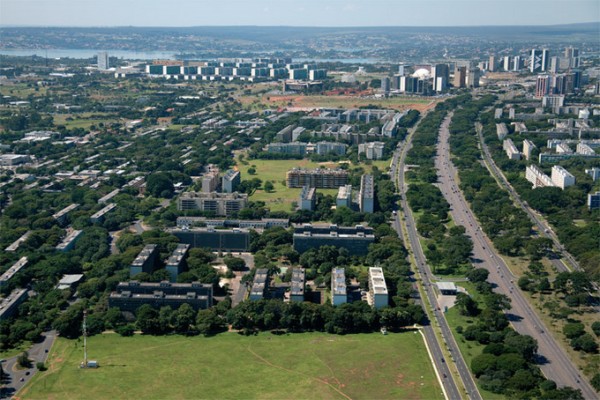As the London Olympics have concluded, the world’s attention turns to Rio. The XXXI Games in 2016 will mark the first Olympics for the South American continent; the Olympic flag was officially handed off at this summer’s closing ceremony. And as the world follows the day-by-day progress as Rio moves toward the next installment in 2016, all that green scrutiny directed at this summer’s competition naturally turns toward green building and sustainable development in Brazil.
The city of Brasília offers a compelling glimpse of what a green Brazilian metropolis might look like. Developed to fulfill a promise in the country’s constitution to have a federal capital built in the country’s hinterlands, President Juscelino Kubitschek ordered its construction back in the 1950s. Brasília has acted as a locus for eye-catching Brazilian modernist architecture, and not always in a good way — the UK’s Guardian reports that the city has garnered both admiration and scorn for its architectecture (particularly its massive super quadra condo developments). But Brasília’s most interesting development is relatively recent, and is currently taking place in the city’s new northwest sector, or Setor Noroeste.

Call it a laboratory for sustainable development. Noroeste features more pedestrian walkways that the rest of the city and and 44 kilometers (27 miles) of bicycle paths. And unlike those block-long shopping districts that are part and parcel of the super quadra design — which serve to discourage foot traffic — this sector features smaller shopping districts spaced two blocks apart.
Homes here are built to run on solar power and natural gas. Only solar thermal is allowed for domestic hot water needs, and residences feature integrated rainwater harvesting systems that are expected to help Noroeste capture and reuse much of the rain that hits its roofs. (In a city that faces the threat of a freshwater shortage by 2025, this is a key component in establishing sustainable infrastructure.)
All of which runs fairly standard for green developments anywhere in the world. But garbage and recycling bins connected to giant vacuum tubes? Now that’s some futuristic green. These tubes transfer recyclables and waste directly to city treatment plants, avoiding the need for garbage trucks.
The focus on sustainable development extends to the commercial sector in Brasília in projects currently under development such as Green Towers Brasília. This LEED-certified, three-phase office development totals 85,000 square meters of leasable area in a 16-floor building. The project is strategically located in Brasília’s North Government Sector, between the Noroeste residential neighborhood to the north and a banking sector to the south. The Green Towers development is anticipated to be complete this year.
But no development in Brazil, it seems, is all that cut and dried. In order to develop its “sustainable laboratory,” the city of Brasília had to evict a number of indigenous people who were, according to a 2011 court ruling, squatting on the land. As the northwest sector is aimed at wealthier residents, this is a fact that might draw some unfavorable world attention to this otherwise exemplary green development.